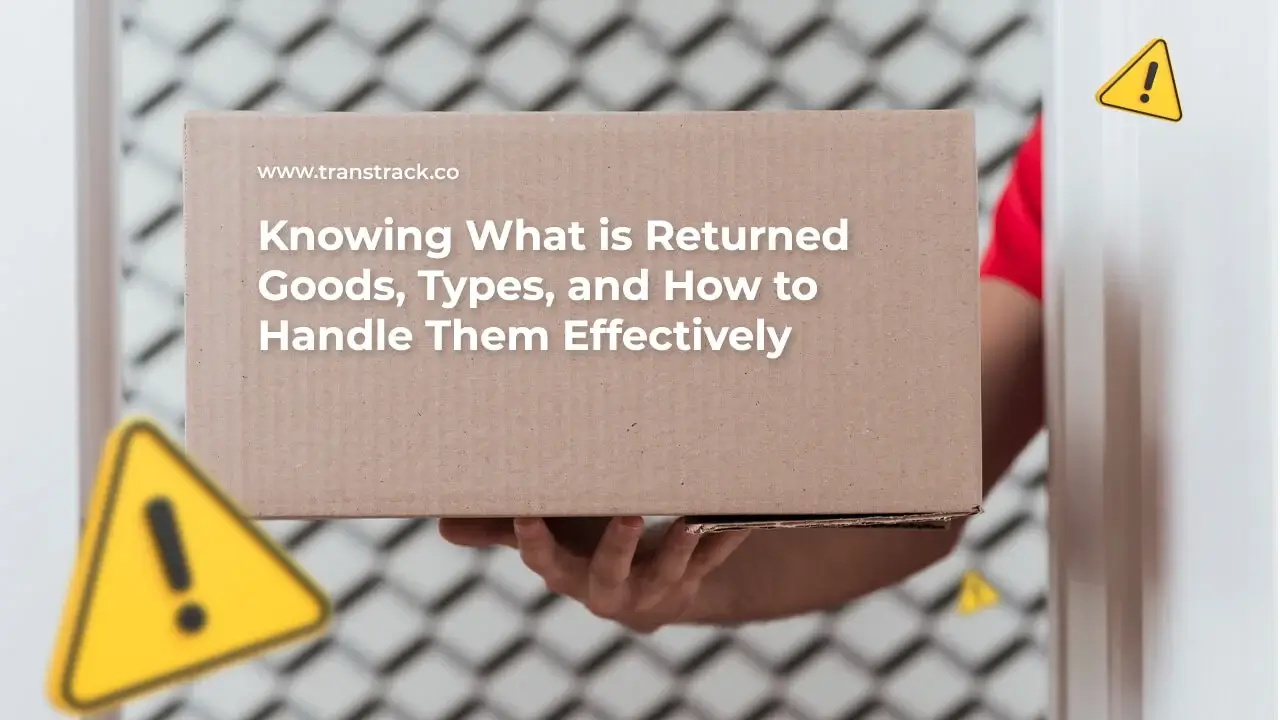Knowing What is Returned Goods, Types, and How to Handle Them Effectively

Returning goods is a term that we may have often encountered in buying and selling transactions. Returning goods or returning goods is inevitable in a business, be it an online or offline business. There are many reasons why goods need to be returned.
Returned goods can be a detrimental thing for both businesses and customers, so it needs proper handling to reduce the occurrence of returned goods.
Relax, you don’t need to be confused, we have prepared complete information about return goods in this article. So, to add to your insight regarding returned goods, see the explanation of this TransTRACK article until it’s finished!
Definition of Returned Goods
First of all, let’s discuss what is meant by return goods. Returning goods is part of reverse logistics, which is the process of returning goods that are generally done by customers to sellers. The reasons can vary, ranging from damaged goods, not in accordance with expectations, to the selection of the wrong size or color.
Returns are a common phenomenon in the world of e-commerce and modern commerce. It is part of the sales cycle and can affect both sellers and buyers. For the seller, a return item may be costly both in terms of money and reputation. Meanwhile, as a buyer, returning goods can be detrimental in terms of time and cost because you need to wait longer and pay for shipping.
Types of Returns
Returns can occur in a variety of business contexts, and understanding the types of returns is an important step towards managing them effectively. Two common types of goods returns are Purchase Returns and Sales Returns. Here’s the explanation:
Purchase Returns
A purchase return occurs when a business returns an item purchased from a supplier or vendor. The purpose of a purchase return is to get a suitable item or replace it with a new item.
The way to return purchased goods is to contact the supplier or vendor, then provide detailed product information that you want to exchange. The vendor will check the terms and conditions that apply regarding the return of goods. When the return request is approved, you just need to send it, and wait for the new item to be sent back.
Sales Returns
Sales returns are actually not much different from purchase returns. Sales returns take the point of view of the seller or vendor. Simply put, a sales return is the receipt of goods returned by the customer to the vendor or store.
As a seller, when the returned item arrives, you need to check it in detail. Make sure that the item sent by the customer is the same as the one you sent before. When everything is in order, the process of resending the goods to the customer can be carried out.
Reasons for Returning Goods
The reasons for returning goods can vary greatly. The following is an explanation of some of the reasons why items need to be returned:
Damaged or Defective Goods
Poor processing and handling may cause damage to the goods. If the product has manufacturing defects that were not detected during packaging, the customer has the right to return the goods.
Not in Line with Customer Expectations
Products that do not match the picture or description can lead to customer dissatisfaction. If the product received has significant differences in color, size or certain aspects from what was expected, the customer may choose to return the item.
Shipping Errors
Errors in ordering can happen, either by the customer or the seller. Inaccurate order processing can lead to errors in product delivery. This could be the reason for a return.
Expired Goods
Products with expiration dates or limited use periods that do not meet customer expectations can be a reason for returns. Delays in products reaching customers with a short expiration period are a trigger for returning goods.
How to Handle Returned Goods
Effectively handling returned goods requires a well-planned and comprehensive strategy. The following are tips on how to deal with return items effectively:
Implement a Clear Return Policy
Define a clear and transparent return policy. Make sure customers and staff understand the terms and conditions of returns, including return deadlines, return procedures, and returnable item requirements.
Provide Complete Product Information
Make sure the product information displayed is complete and appropriate. This includes size, color, specifications, and product features. By providing clear information, you can reduce the chances of customers returning items due to non-conformity with expectations.
Pack Goods Well and Safely
Carry out a careful packaging process to avoid damage during shipping. Use appropriate packaging materials and ensure the goods are safe during transit. Good packaging can reduce the risk of damaged goods during shipping and reduce returns.
Provide Good Customer Service
Respond to customer queries and complaints quickly and kindly. Providing quick solutions can prevent returns that could have been resolved with good communication.
In the dynamic world of commerce, returns management is an essential skill. Dealing with returns with a positive attitude and taking appropriate action can help improve customer satisfaction and build long-term relationships.
The implementation of Fleet Management System (FMS) technology from TransTRACK can make a significant contribution in the optimization of the goods return process. With FMS, businesses can efficiently track and manage vehicles involved in the process of transporting goods back to the warehouse or supplier. FMS enables real-time tracking, ensures better visibility into return trips, and optimizes delivery routes.
Thus, implementing FMS not only simplifies logistics management but also helps businesses reduce costs and improve customer satisfaction through more effective handling of returned goods.
Topic





